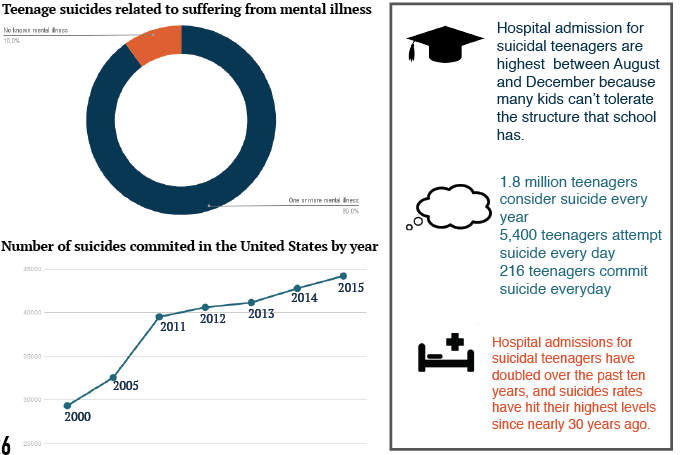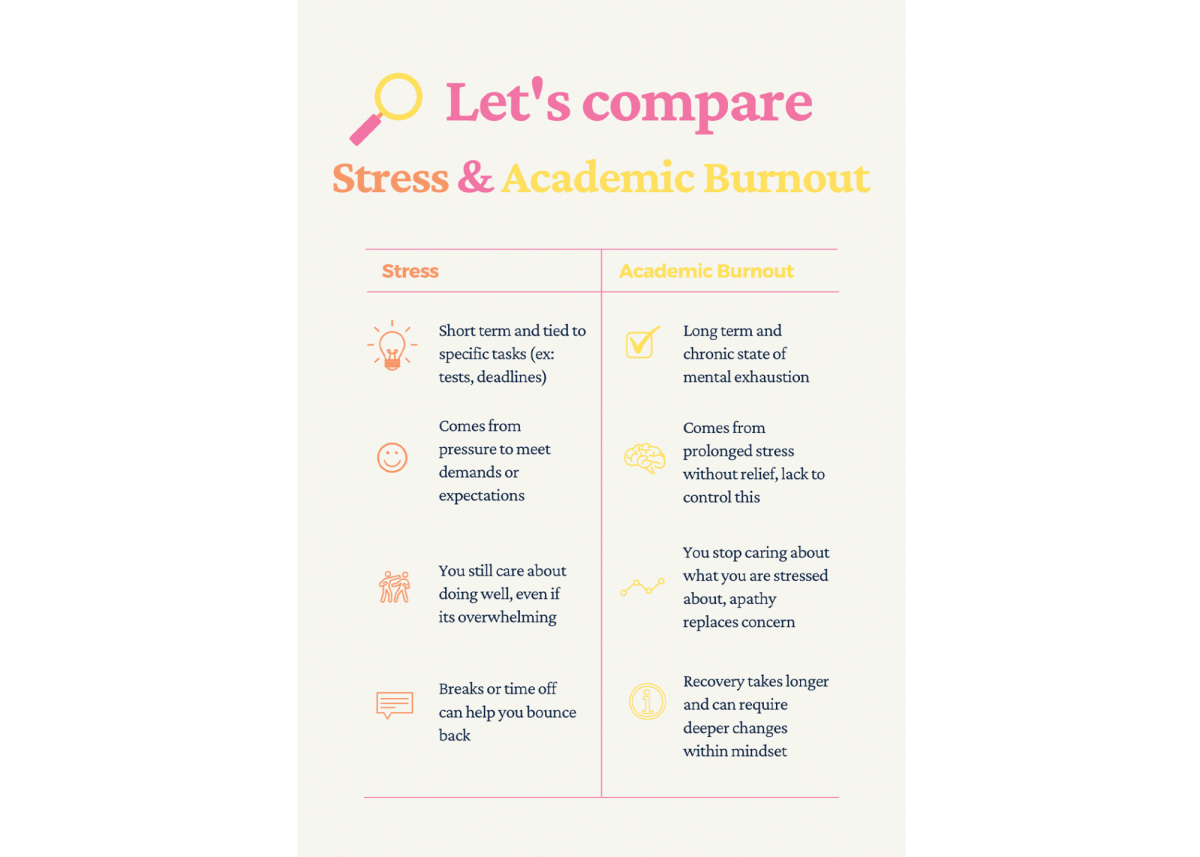Anxiety: An invisible epidemic
December 21, 2017
By: Nina Peci –
A 2016 survey, conducted by the American College Health Association, found that 41 percent of incoming college freshmen and 62 percent of undergraduates felt overwhelming anxiety due to all they had to accomplish as the school year began. Having constant anxiety takes a toll on even the most talented, organized, and independent of students. Untreated anxiety can have severe consequences like self harm, mental breakdowns, and even suicide.
According to the National Institute of Mental Health, 1.8 million teenagers consider suicide every year. That is a staggering, 5,400 teenagers attempting suicide every day. About 216 of those teenagers succeed daily.
Over 90 percent of teenagers who commit suicide have some sort of mental health problem, the majority of them suffering from anxiety, the most common mental disorder in America, affecting one-third of teenagers. These are more than just numbers and statistics – they’re people.
So who are these kids? One of them could be the guy in math class that struggles everyday, the girl who has all A’s, the classmates who seem like they have the perfect life, and they do, but only on paper.
Not coincidentally, hospital admission for suicidal teenagers have doubled over the past ten years – the highest rates occurring when the school year starts.
The Counseling and Psychological Services at Bryan West, better known as CAPS, is a program which provides all ages with mental health rehabilitation. In 2016, they had 6,000 total patients throughout the year.
During a stay there as an in-patient, I left my room one morning to get breakfast. The area in which we would meet was usually a bit over half full, but this particular morning it was beyond crowded. Confused and concerned, I asked someone why there were so many kids there, where did they come from? They casually replied with, “Oh, a bus-full came because another hospital was full.” Hearing that said so calmly, while looking at a crowded room of kids who don’t want to be alive anymore, is one of the most heartbreaking things that has ever happened to me. What hurt the most was talking to these kids. We joked around and laughed until we could barely breathe, talked openly and genuinely about what we wanted our futures to look like, if we wanted to have futures that is. It was always the kids with the loudest laughs and brightest smiles that had the most devastating stories. All I could wonder is how did kids with such potential drive themselves to this point, and how was it possible that I saw so much of myself in them?
Trying to not let problems like anxiety get to the point of suicide has become an increasingly difficult task due to the large gap of understanding between generations. On top of school-related anxiety, Millennials and Generation X have two factors that add to it that no other generation has ever experienced to the extent that we have; parents, and ourselves.
This wouldn’t be the first time that our generation’s parents got criticized for being helicopter parents. By telling their hopeful and naive children to follow their dreams and do their own best work, they left us ill prepared for when we were thrown into the discouraging and competitive reality of the public school system. This led to a sort of shock for us, unable to distinguish when doing our best was doing too much and becoming destructive to our own well being. We began pushing our own limits, taking on every opportunity presented, every AP class possible, because in reality, we are terrified of failure.
For senior Olivia Hitchcock-Willis, this is her reality.
“I’m afraid of not being happy,” said Willis. “And that’s what’s happened recently, I’m not happy, and that really freaks me out.” She has been diagnosed with depression, social anxiety, severe anxiety, and OCD. Having a good day is a careful balancing act.
She understands the feeling of being stuck inside her head better than anyone, it’s something indescribable to say the least.
“If [people] realized, everyday, how much I’m in my head, they’d be shocked. Nobody, nobody knows how bad it is.”
A common misconception is that anxiety is just having a lot of stress, but it’s far more complex and invasive to daily life than stress is. Stress is also a feeling, while anxiety is a mental disorder.
“I obsess about things, all day, all the time,” said Willis. “I worry about things, all the time. It’s just always there.” Anxiety is her first thought in the morning, it tires her out mentally and physically, and makes facing challenging situations far more difficult. She is able to cope with it by talking with her friends, parents, and therapist and figuring out how to be the most successful that she can be when her anxiety may get in the way. On the ACT, for example, she was allowed to get extended time to make getting a good score a possibility for her.
With social media, it’s now easier than ever before to compare yourself to others – and this is Willis’s most constant source of anxiety. Her life may seem picture perfect; She travels, is a good student, plans on attending a good college, but that’s how she portrays it on social media.
“For me social media is a way to compare myself. It’s not just body image, it’s about the things people do everyday, how you see yourself.”
Willis is one of over a million teenagers in the US affected by this disorder. Technology, school, our parents, ourselves, it’s all piling up and makes this worse than ever before. Anxiety truly is an epidemic that must be acknowledged. We can’t push it off any longer, not just for ourselves, but for the sake of future generations as well.
Graphic by: Syann Englehard
Charts by: Nina Peci









